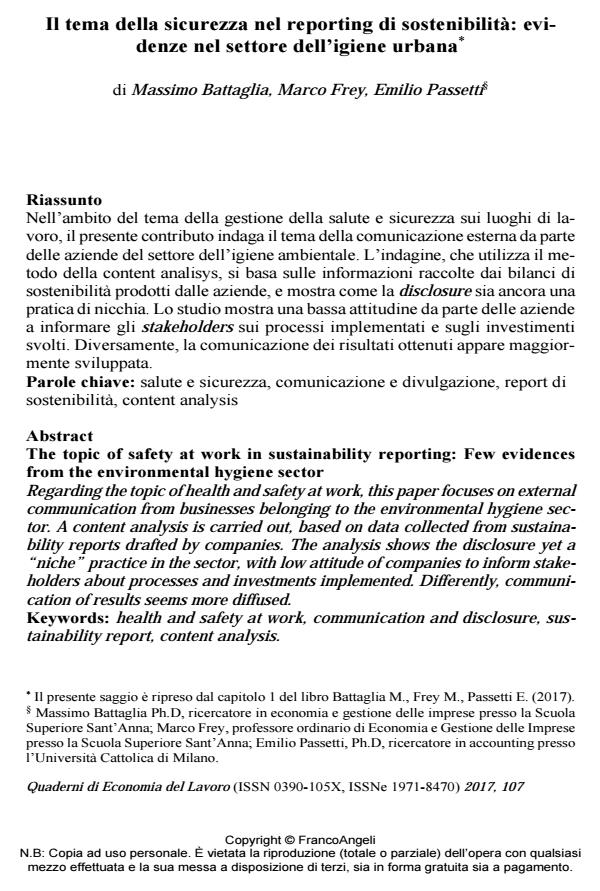The topic of safety at work in sustainability reporting: Few evidences from the environmental hygiene sector
Journal title QUADERNI DI ECONOMIA DEL LAVORO
Author/s Massimo Battaglia, Marco Frey, Emilio Passetti
Publishing Year 2018 Issue 2017/107
Language Italian Pages 26 P. 99-124 File size 226 KB
DOI 10.3280/QUA2017-107003
DOI is like a bar code for intellectual property: to have more infomation
click here
Below, you can see the article first page
If you want to buy this article in PDF format, you can do it, following the instructions to buy download credits

FrancoAngeli is member of Publishers International Linking Association, Inc (PILA), a not-for-profit association which run the CrossRef service enabling links to and from online scholarly content.
Regarding the topic of health and safety at work, this paper focuses on external communication from businesses belonging to the environmental hygiene sector. A content analysis is carried out, based on data collected from sustainability reports drafted by companies. The analysis shows the disclosure yet a "niche" practice in the sector, with low attitude of companies to inform stakeholders about processes and investments implemented. Differently, communication of results seems more diffused.
Keywords: Health and safety at work, communication and disclosure, sustainability report, content analysis.
Massimo Battaglia, Marco Frey, Emilio Passetti, Il tema della sicurezza nel reporting di sostenibilità: evidenze nel settore dell’igiene urbana in "QUADERNI DI ECONOMIA DEL LAVORO" 107/2017, pp 99-124, DOI: 10.3280/QUA2017-107003